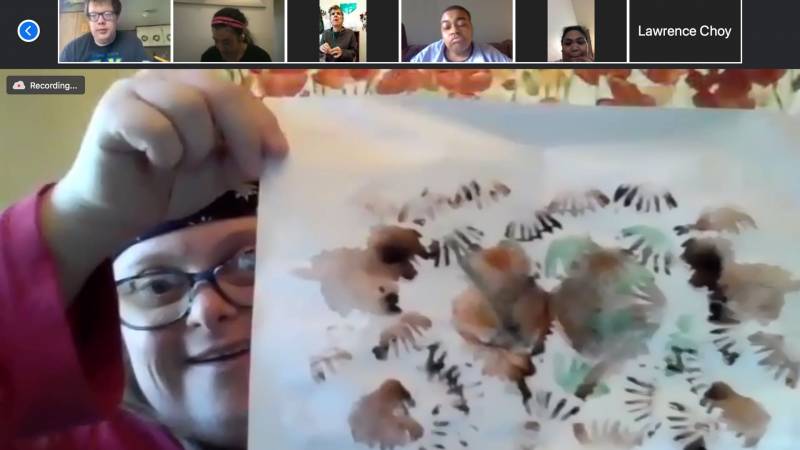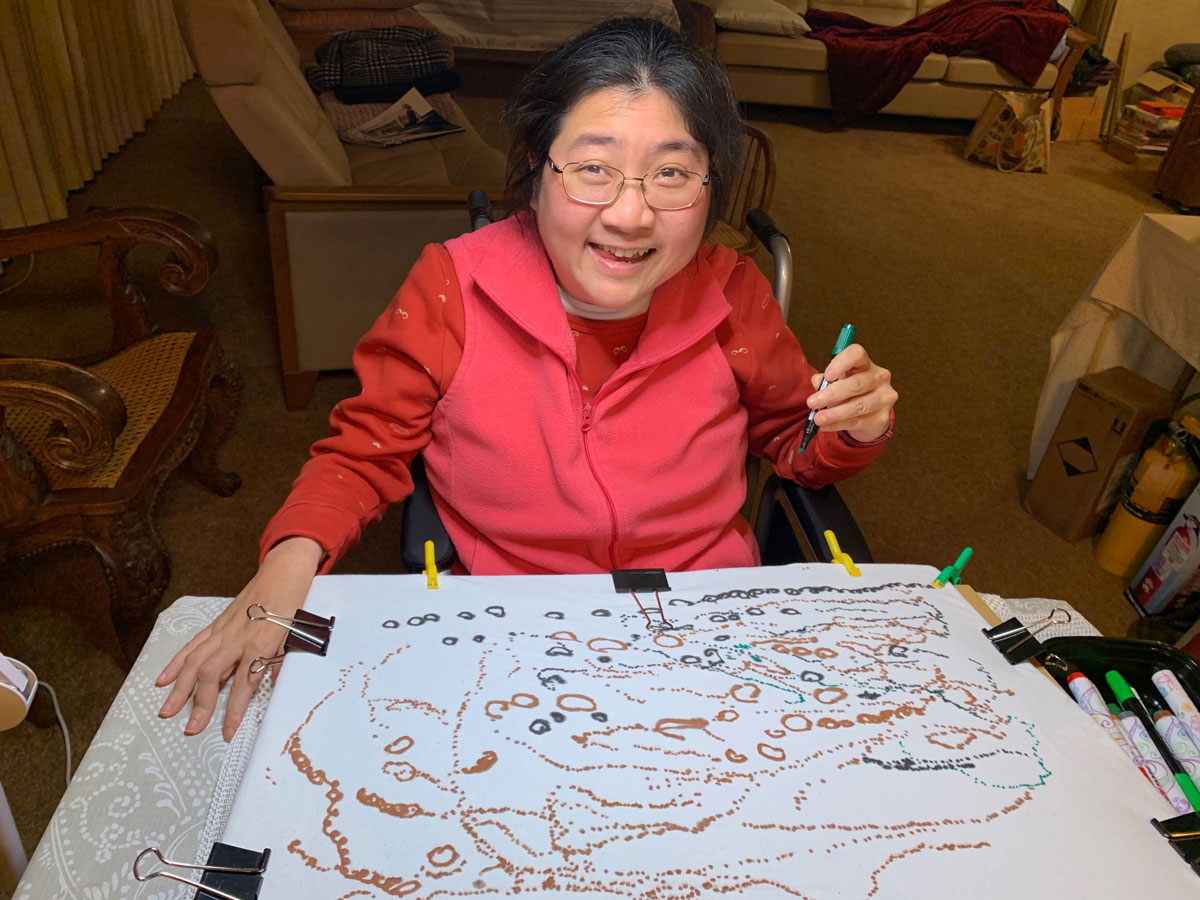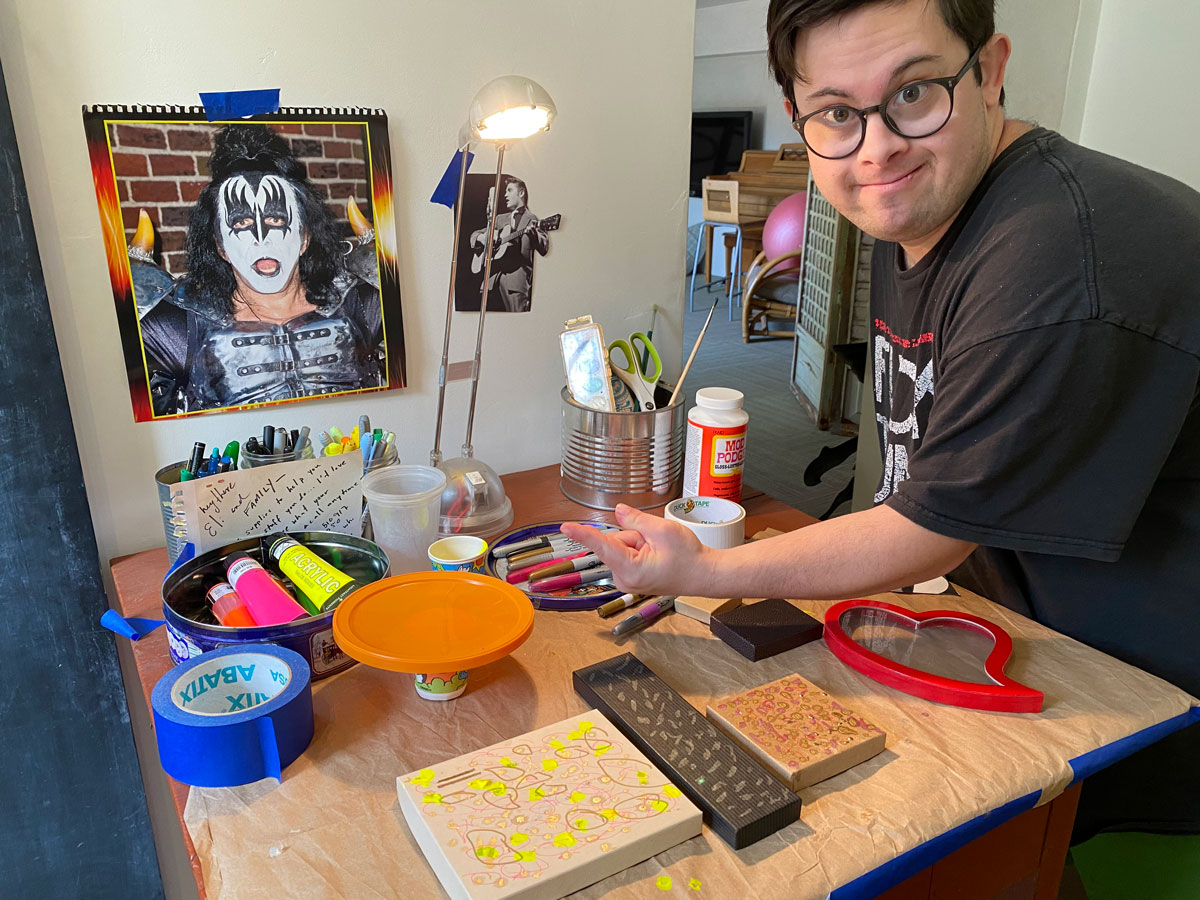On a regular weekday, Bay Area arts organizations NIAD (Nurturing Independence Through Artistic Development), Creative Growth and Creativity Explored are bustling hives of production. Artists with disabilities paint, draw, create textile work, take dance breaks and confer with teaching artists and their studio-mates, drawing inspiration from the palpable buzz of energy.
“There’s hugging all day long because there’s so much affection and joy in the room,” says Elizabeth Brodersen, executive director of Oakland’s Creative Growth. Hosting 50–75 artists a day on-site, Creative Growth, Richmond’s NIAD and San Francisco’s Creativity Explored have existed since 1974, 1982 and 1983, respectively. Some of their artists and staff members have been with the organizations for decades.
But regular weekdays don’t exist anymore. Now, like everyone else in the Bay Area, the hundreds of artists who regularly visit these art centers are isolated in their homes, cut off from their communities and experiencing the loss of daily activities that create healthy routines.
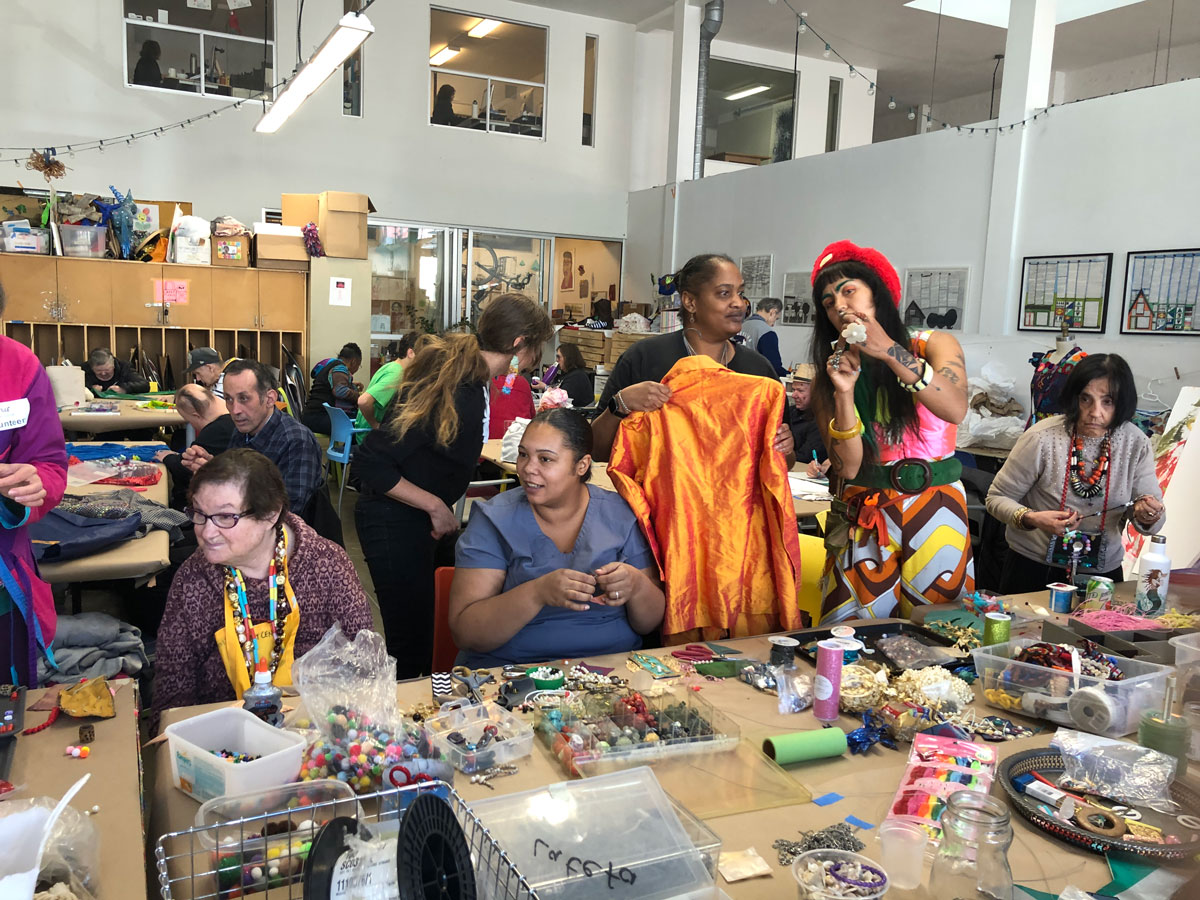
Committed to providing support to their artists, each organization has translated their programs and services to comply with shelter-in-place orders, an undertaking that involves one-on-one check-ins, delivering kits of art supplies, learning new technologies and trying to keep the spirit of each institution alive remotely.
“We’ve basically had to reorganize our entire service delivery model,” says Linda Johnson, Creativity Explored’s executive director.
NIAD, Creative Growth and Creativity Explored, all rooted in hands-on art-making and face-to-face interactions, are turning to technology in an effort to reach their artists at home. Those “at home” situations vary: artists live in group homes, with family members or alone. Not everyone has access to a phone. Not everyone is verbal. The de facto video conferencing software may be inaccessible.
For those able to join, NIAD has instituted a daily 11am check-in via Zoom to maintain the sense of community; some of those meetings are followed by games of bingo. “Twenty to thirty-five people every day do attend,” says Executive Director Amanda Eicher of their town hall video gatherings. She explains a good number of those attendees are staff members. “I think our staff get as much out of the morning meetings as everybody.”
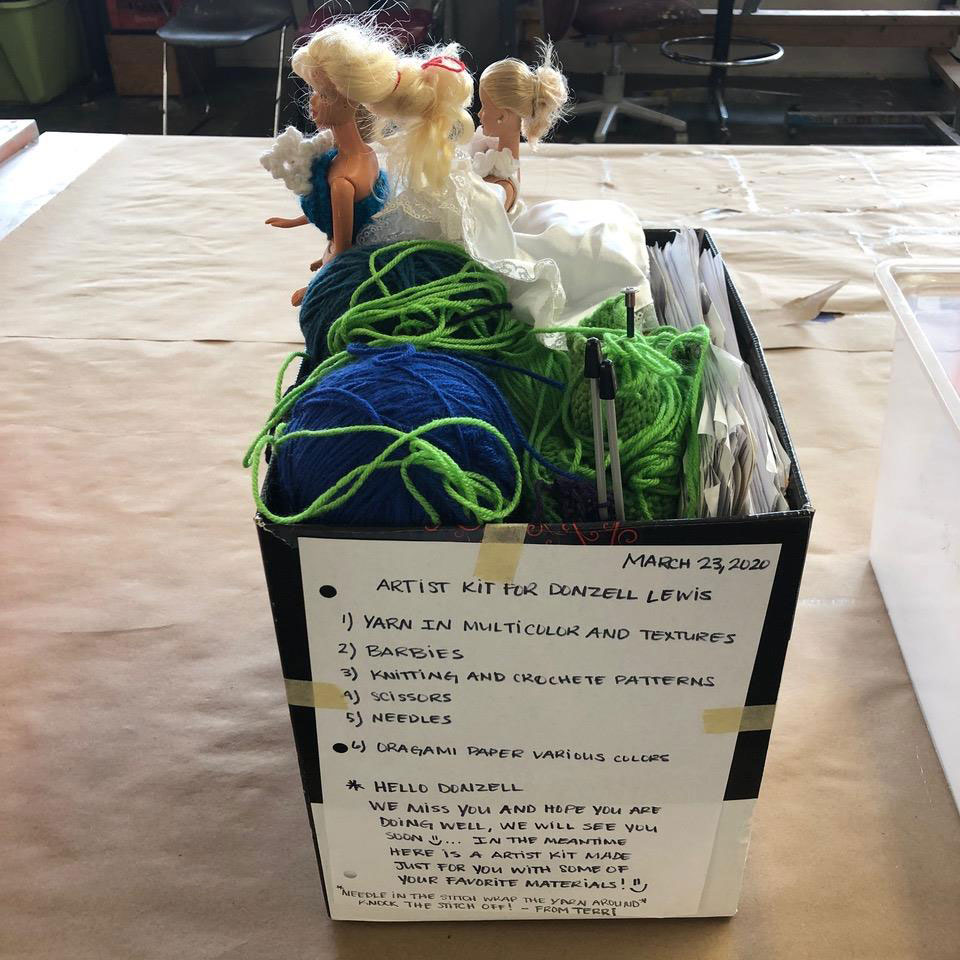
Creativity Explored is working with their funder Golden Gate Regional Center to get more technology—iPads and Samsung tablets—to artists. Even if artists aren’t interested in making digital art, these tools can provide a glimpse of a friendly face or a much-needed conversation. After Creative Growth organized its first video meeting, one artist said of seeing studio-mates and staff, “They make my life beautiful.”
Brodersen, Johnson and Eicher all note the impressive speed at which their teams have adapted their programming. NIAD’s artist kits include a playful guide to being an artist in every circumstance, drawing prompts and handwritten “We miss you!” notes. Eicher says NIAD decided at the start to keep staff fully employed through the crisis. “Because we made that early commitment, every single staff member has designed a new role for themselves in this context,” she says.
